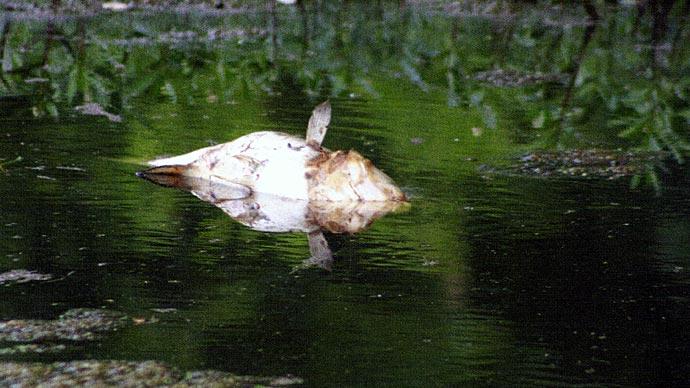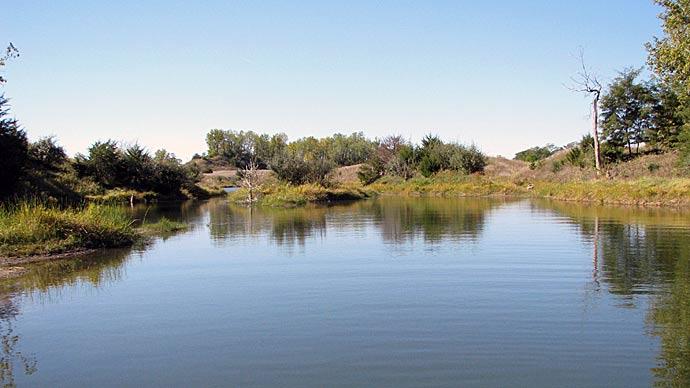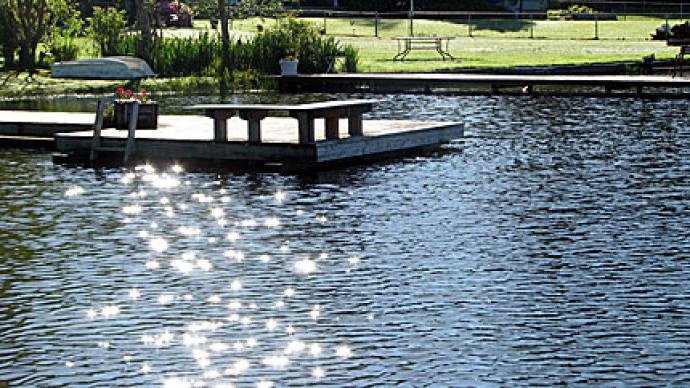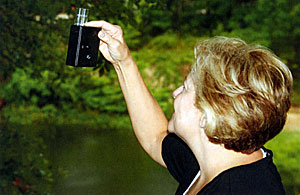
In Fisheries 101 we all hear about pH and oxygen and temperature and all that water chemistry stuff we "need" to know about. After all, many of us who have ponds and lakes feel an inherent need to understand those basics of water quality, since water is the medium from which we derive so much pleasure and a sense of responsibility. Water.
It's an amazing substance, one not so easily understood by even the most advanced anglers and pondmeisters.
There's an adage in the fisheries business. You're not a good fisheries biologist until you've lost fish in a variety of ways. At professional meetings, biologists have an almost macabre way of comparing their mistakes. Most of the time, those fish deaths can be mediated with better management practices. Almost all of the time, water quality...or at the least, something dissolved or living...or missing...in the wet stuff.. .is a contributing factor.
Understanding water quality is important. Complicated, but important.
Over the next few articles, we'll tackle the concept of water quality and do our best to make it simple, even though it's not.
Start with pH. If you delve very deeply into pond management, you'll soon see, or hear about, pH. Technically, pH is the measurement of free hydrogen ions in your water. If you take a beaker of distilled water, which has nothing dissolved into it, and pour an acid such as vinegar in it, the pH will drop. Low pH means acidic water. A pH of 7 means "neutral"...or there is a balance of acid and base in the water.
Listen to this...it will help you understand pH. In your mind, picture a ruler. Look at the 7 inch mark. When measuring pH, think of 7 as ground zero. Then, each inch going down is a measure of acidity. Each inch going up is a measure of basicity. What's a base? Rolaids and Turns are bases. They add "buffering capacity" to your water. That's why people with acidic pH are recommended to add lime. Lime is a base and buffers your water, just like Rolaids.
Here's where it gets really interesting.
Each whole number of pH change is ten times the amount of the number next to it. That means a pH of 6 is ten times more acid than that neutral pH of 7. That means pH of 5 is ten times the pH of 6, but one hundred times the pH of 7. So, pH of 4 is 1,000 times more acidic than pH of 7. That helps us understand the significance of pH.
What should pH be in water? It's best when somewhere between 5 and 9, ideally from 6 to 8.
That's why biologists and pondmeisters care about pH.
What about some of that other stuff?
Oxygen, for example? People ask me fairly often if they should own an oxygen test kit or one of those fancy meters that check temperature and oxygen. Sure, it's a good idea...as long as you use it consistently. If you use an oxygen meter only when you think oxygen is low.. .and then you find out your oxygen IS low, what can you do about it?
Here's a primer about oxygen.
Water, being the 'universal solvent', absorbs oxygen from wherever it can get it. There are two fundamental sources of oxygen in water. The main source is the atmosphere. Water is similar to a sponge. When it contacts the atmosphere, water releases excess gasses produced by biological affects under the water. But, it also absorbs gasses from the atmosphere and oxygen is our most important one. At the same time, any plant life in the water produces oxygen, too. But, this process must have sunlight. Plants photosynthesize during daylight hours and produce oxygen from carbon dioxide, just as terrestrial plants do. At night, the reverse happens.
Here's where it gets a little tricky.
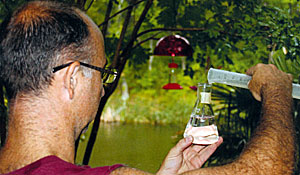
As water temperature rises, its affinity for oxygen drops. In other words, warm water holds less oxygen than cold water. The physical properties of water affect the chemistry of water. Water is most dense at 39 degrees, F. Weigh a gallon of water at 39 and it's at its heaviest point. As the temperature rises or falls from that key temperature, it expands. Water can physically hold the most water at 39. As it expands, it holds less oxygen. Water at 80 degrees can't physically hold as much oxygen. That's why we don't see trout in 80 degree water. Their bodies need more oxygen than the water can physically hold.
Just because water has the affinity to hold so much oxygen doesn't mean it will. It still must have a source to replenish, as oxygen is consumed.
Ah...another factor. Oxygen is consumed in a number of ways. Fish take up oxygen. Plants do, in the absence of sunlight. Decaying organic matter uses oxygen. The biological term for "absence of oxygen" is "anoxic". During summer, water on the bottom of most lakes becomes anoxic. That's because there's a high demand from decaying stuff on the bottom and no way for that water to be able to replace oxygen. Bottom water is separated from the top water by a zone called the "thermocline". Bottom water is much cooler than the top water, so it's heavier and stays on the bottom until the temperature at the top cools to the level of that water at the bottom, and the layers mix. That's what people are talking about when they say my lake "turned over". So, that bottom layer of water can't contact the atmosphere and is too deep for plants to grow, so it doesn't have an oxygen source. Oxygen disappears.
What about your fish? They definitely need oxygen. Their metabolism rate determines how much oxygen they need. Plus, bigger fish have a bigger oxygen demand than smaller ones. That's why you'll often see the biggest fish die when oxygen levels drop too low, but the smaller fish make it. Small fish need less oxygen to support their small sizes.
If water were to have as much oxygen as it could hold, we wouldn't see fish kills in our ponds. But, when too many plants or too much green microscopic algae, combined with a heavy load of fish, are trying to live in hot, summer temperatures, oxygen levels can plummet.
Most warm water fish need 3 parts per million dissolved oxygen or higher to avoid stress. Less than 3 ppm and larger fish become oxygen- starved. Different species have slightly different oxygen needs. But, look at 3 ppm as your lowest required levels.
So, there's a fundamental look at three important components of water quality. pH, temperature and oxygen. Temperature and oxygen work together, while pH is a measurement.
It gets a little ticklish once we understand how those three key ingredients work together for water to become what it is. What's so ticklish? Well, certain plants live under certain conditions. You'll not see bladderwort in water with high pH. It only grows in acidic water. Chara, on the other hand, cannot grow in low pH. It needs calcium to form its outer covering. Calcium is a base and is found in water pH mostly higher than 7. Bladderwort, a submersed, non-rooted plant, produces oxygen amounts that differ from Chara, a dense, rooted plant which grows in shallow water.
It's these sorts of things that bring water quality into sharper focus. Understanding water quality is an exercise in cognitive thinking, where we do our best to comprehend each different component and then try to figure out how these things work together to develop into what we have at hand.
Next issue, we'll tackle some of those water quality factors such as hardness and alkalinity and try to figure out how they impact what we do as pond managers.
Ah, water...and you thought you just buy a few bottles and drink them down...as you look at the gorgeous pond on your property and try to unlock some of its deep, wet secrets.
Reprinted with permission from Pond Boss Magazine

